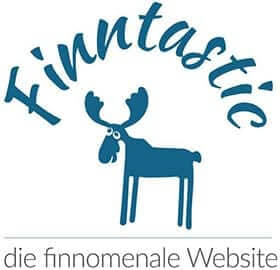Have you ever heard of the Sámi people, the indigenous people of Northern Europe and their spiritual chant, the yoik? I spoke to the Sámi yoiker, musician and actor Iŋgor Ántte Áilu Gaup, also known under the artist name Ailloš, to find out more about the Sámi and their spiritual Sámi chant and its meaning.
Navigation:
- Sami Yoik – meaning and history
- About Iŋgor Ántte Áilu Gaup (artist biography)
- Current yoik classes and concerts by Ailloš, and other Sámi events 2024 in Switzerland
- Further links with information on yoik and Sámi culture
- CD Recommendations on yoik
- Some inspiring Sámi artists
- Some young Sámi artists
- Film tips on Sámi culture and yoik
- Literature tips on Sámi culture and yoik
- More articles about Sámi culture and yoik on Finntastic.de
Sámi yoik and its function – Interview with Iŋgor Ántte Áilu Gaup
(The interview was conducted via Zoom in spring 2024)
Finntastic:
Hello Ailloš, ollu giitu (Thank you) for taking the time to talk to us about Sámi culture and yoik. Where are you at the moment?
Ailloš:
I’m in Olmmáivággi, a sea-Sámi area in northern Norway that hosts the Riddu Riđđu Festival every year in July, one of the biggest festivals of Sámi and indigenous culture and music.
Finntastic:
Oh yes, I’ve heard about the Riddu Riđđu festival. Hans-Peter from “Joik in der Schweiz” told me about it in an interview. He likes it very much. So before we start to talk about Sámi culture and yoik, tell us a bit about yourself!
Ailloš:
With pleasure! I am a Sámi and Sámi musician, yoiker, actor and translator, born into a family of reindeer herders in Guovdageaidnu*, Norway and I have been working in these fields for many years now. I started my career in 1978 at the age of 18. I am also a founding member of the National Sámi Theatre Beaivváš and still a member of the permanent ensemble. I also make my own music. You can find out more about me as an artist on my artist’s website www.yoikur.com.
*(Northern Sámi name for Kautokeino)
Finntastic:
So the yoik has been with you all your life. Tell us, who are the Sámi? And what meaning or function does the yoik have in Sámi culture and for you personally?
Ailloš:
The Sámi are indigenous people who are still living in a large geographical area called Sápmi, which today includes parts of Sweden, Norway and Finland as well as the Russian Kola Peninsula. As a result, there are many different yoik styles and dialects. I was born in Norway, so my yoik style is more like the northern Sámi yoik technique.
I would say, that for me and many other Sámi yoik is our tradition. It’s a kind of musical language that we call “juoigan” in the Northern Sámi language. A yoik is a way of expressing your feelings. We say, that we may not be able to find words for our deepest feelings, so we yoik them.
Finntastic:
Could you explain the yoik technique in more detail? I always hear that yoik is a bit similar to yodelling?
Ailloš:
Yes, it is a bit like yodelling, because you can find similarities like these pentatonic scales in a lot of folk music. Nowadays, there is modern yoik music as well as traditional yoik. Music changes over time. Modern music usually has a straight rhythm, like four-quarter time or six-eighth time. Traditional yoik has also mixed rhythms. This is difficult to learn, when you are used to this straight western rhythm thinking. Some yoiks have lyrics like the ancient epos “Son of the Sun”. Most northern Sámi traditional yoiks don’t have long sentences, but you may find keywords such as “nine-valley-runner in one night, which is a metaphor in the yoik of the wolf.
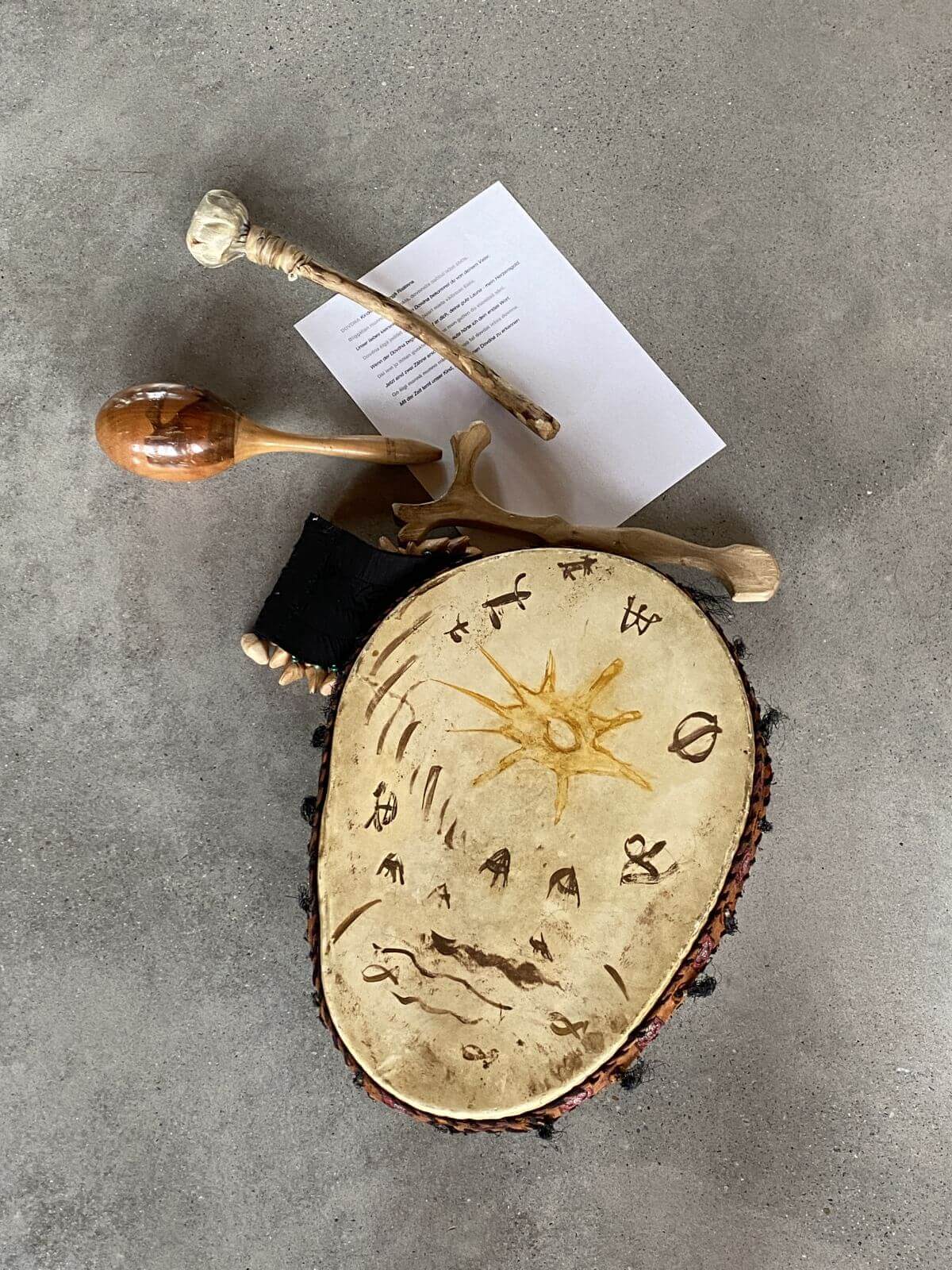
Finntastic:
And what is the role of the shaman drum in the yoik?
All we know about these old Sámi drums is that they are used to induce a kind of trance. This is a conscious state in which you can see and feel things without being in a natural sleep. You listen to the rhythm of your drum and you can go to places or meet ancestors that help you to get answers to your questions. But we don’t really know what the function of these drums really is and how it works, because it was taken away from our culture a long time ago. But what I like to do is to use them to emphasise my yoiks.
Finntastic:
Does it make a difference to you whether you are yoiking a person, an animal or a thing?
Ailloš:
Sure, but it’s really hard for me to explain. Of course there is a big difference. First of all, it’s up to the yoiker how to do it. It’s a kind of yoik language and it’s important for the Sámi to keep it alive. When you yoik the mountain or a person, you put different feelings into the music. Even a landscape yoik can sound different, depending on whether it’s a high mountain or a small hill, a wide landscape with no trees or a dense forest.
As a yoiker you have a really good feeling for nature and you know how to put it into melodies, and you have a good feeling for people too. But it’s very important: When you yoik, you express your feelings to the object, which means to a mountain, to a stone or to a person. You don’t yoik about an object or a person. You transform into that object, which you are yoiking. For example, when you yoik the wolf, you feel like the wolf.
Notice: Finntastic.de uses WP YouTube Lyte to embed YouTube videos GDPR compliant. If you click the "Play"-Button YouTube will collect information about you!
(VIDEO: Ailloš) Ailloš is yoiking his brother Ánte Mihkkal Gaup.
Finntastic:
Tell us more about a person’s yoik? Does it change, as the person grows up?
Ailloš:
Well, your personal yoik is your identity, like your name. It expresses your personal identity in a melody. Sometimes it also gets some matching lyrics too. So if the person is very lively, he or she will get a vivid yoik melody.
It’s also possible to make an ironic yoik to tease someone, but mostly, the yoik should make the person it’s dedicated to feel good. That’s why yoik should be made by people who know the person very well and who have the skills of a yoiker. Not every Sámi can make a personal yoik, so usually they ask a “luohtečeahpi”, a professional yoiker, maybe someone of the family, to do it. You can also greet or dignify someone by yoiking. It’s also an honour to receive a personal yoik, but it is also a great honour for the yoiker to create such a personal yoik.
When you are a child, you get this “dovdna”, this child’s personal yoik. When you grow up, your personality, your character changes, and so does the personal yoik. It can be based on the dovdna, but it can also be a quite new yoik. But what is very important is, that the person who receives a yoik is satisfied with the yoik. This is one way to do it. Sometimes people begin to yoik a person whom they appreciate very much and he or she gets a yoik in that way.
The other one is: If there is a very beautiful Sámi girl, it could be a kind of competition for the Sámi boys to create the best personal yoik for her. She listens to them all and chooses her favourite personal yoik. So there are many ways of making personal yoiks. Whenever people get yoiked it is an honour for them. Or maybe I should say it was an honour. Nowadays you even have to ask people to be allowed to joik them.
Notice: Finntastic.de uses WP YouTube Lyte to embed YouTube videos GDPR compliant. If you click the "Play"-Button YouTube will collect information about you!
(VIDEO: Ailloš) Personal yoiks of Ailloš’s daughter Ingá Ristiinná: First you hear the children’s yoik (the dovdna) and following the adult yoik.
Finntastic:
And how easy is it to learn to yoik?
Ailloš:
It’s important if you want to learn to yoik, you need to be clear about what you are doing. Maybe yoik sounds a bit like the letter “l” in the word “bilateral”. And when you start singing that, it sounds a bit like yoik, but it’s not the same, you know. Yoiking is not just singing “Lalalala”, nor can it be explained by words.
You have to try it yourself to find out what is special about yoik. You have to learn the basics, which means the rhythm and the vocal technique. I would say that learning to yoik is like learning another language. You listen and watch what I do with my mouth and my voice and then you try it yourself. I think it’s really possible to learn yoiking, because if you start with dovdna, the child’s yoiks, they are short and easier to learn. So if you want to learn yoiking more in detail, you can come to one of my yoik courses and you will learn what I have tried to explain.
Finntastic:
How did you learn to yoik? Is it something that is passed on from generation to generation?
Ailloš:
Normally, it should be like this, but I did not hear yoik at home. When I was growing up the yoik was not allowed at school or other official places. This is a very sad chapter in the history of the Sámi people. Many Sámi, including my parents, were converted to Christianity, so they didn’t yoik at all. I heard my first Sámi yoik at a wedding. Although it was forbidden to yoik in public, some relatives of mine yoiked privately for a young couple getting married. I was a little boy and I listened to this yoik, which also took me to some kind of fantasy world. It was so beautiful.
One day, I asked my father: “Is it really true that you have never yoiked in your life?“ And he smiled and said: “Of course, I used to yoik, when I was younger. When we moved with our reindeer to the seaside, we met some non- Sámi people there. They asked me to yoik, so I did, and they looked at me with wide eyes and open mouths of admiration”. I thought: “My God I must try to do the same!”. That was something I had to find out, even if it was not allowed to yoik at home. Later I learnt the yoik technique from my relatives. They used to yoik while they were out working or fishing. Unfortunately, when I grew up, I realised that yoiking was not as alive among Sámi people as it used to be.
Finntastic:
So the Sámi culture was suppressed for many years by the states of Norway, Sweden, Finland and Russia, and yoiking was a mortal sin and banned for a long time. How has this affected Sámi culture and the knowledge of yoik?
Ailloš:
I think there are a lot of young Sámi people today who don’t know how to yoik, because their ancestors never taught them. Unfortunately, they are now the majority. But fortunately, since the 1960s, Sámi artists have brought the yoik back and put it on stage. Yoik has become a kind of art, which is nice.
But it was also quite new for many Sámi to yoik in front of a big audience, because before the yoik was something that Sámi people did together in private at weddings and other events like birthdays and when they are out with their reindeer. Nevertheless, the yoik has survived and that is fantastic! And since 1991, for example, they started to teach yoik in primary school in Guovdageaidnu. And now Sámi languages and culture is more often taught in schools and at festivals in Sápmi like Riddu Riđđu Festival too, which is good.
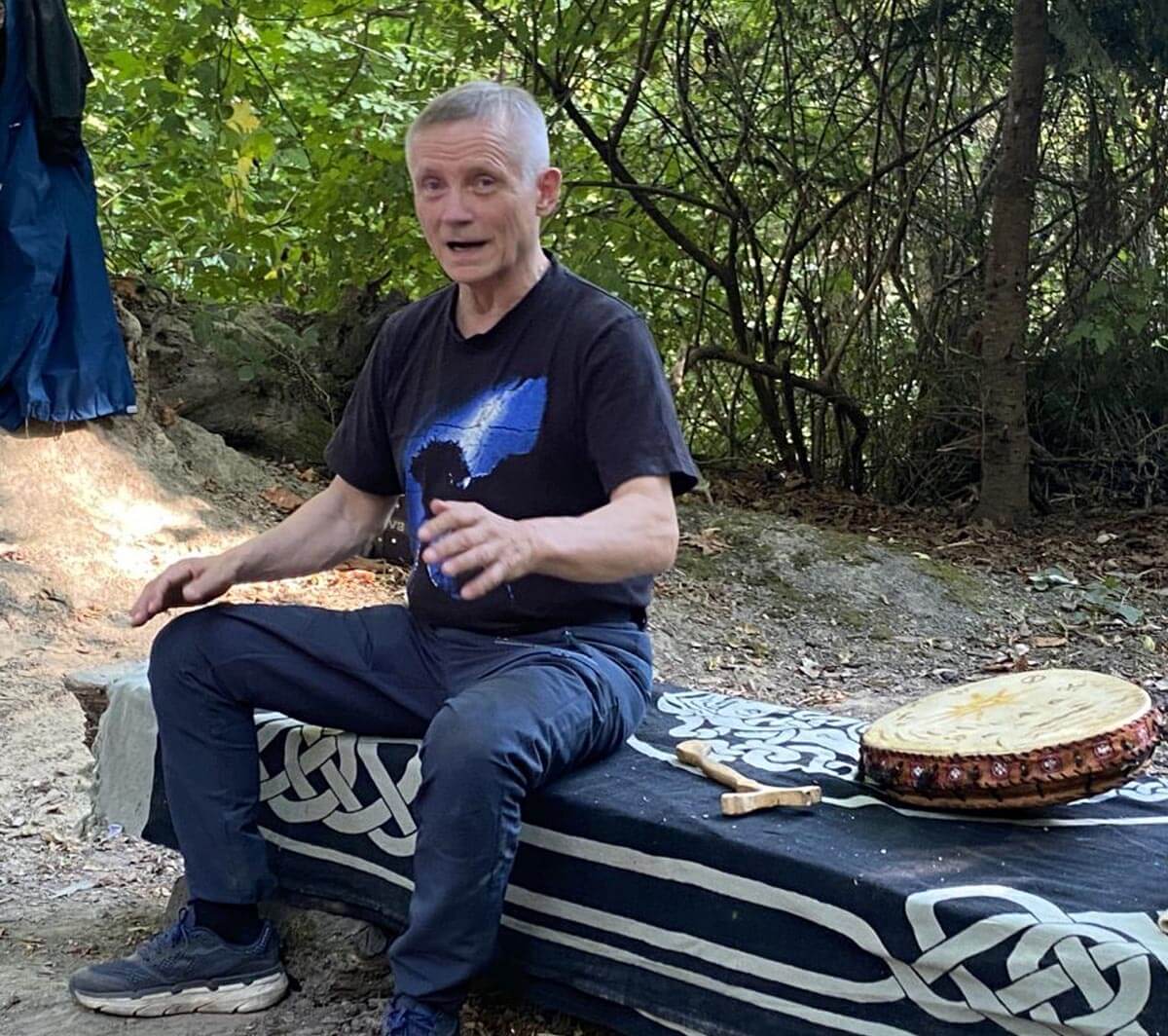
Finntastic:
And how do young Sámi get in touch with yoik these days?
Ailloš:
Young Sámi try to learn yoik, for example by listening to old yoik recordings and from older people who still know how to yoik. Some of them say: “I am inspired by yoik, so I do it in my own way.” I would never say that this is wrong: If you are influenced by your own culture, of course go ahead! Come on, art is free, like you and me. That’s the point: You don’t have to call it yoik. It’s just a different way of looking at it.
Unfortunately, some older people say that these young people ruin yoik, when they put yoik on stage, but I don’t think that’s true. I think things have changed and will always keep on changing. It’s the same with yoik. But of course, it’s good to know the tradition and the culture. Maybe when you are older it is important to know the answers to the questions: Where do I belong? Where do I come from? For most people it is important to know their family history.
But the backside of the medal is, that people started to think that all people who used yoik-elements in their music or did something like yoik on stage were real yoikers. But that’s not true. Yoik is very special, and you have to study the technique for a long time to become a yoiker. It depends on what you think the level is. Learning to yoik is the same as learning another language. It takes time.
Finntastic:
What influence did the protests against the Alta dam in the 1970s have on Sámi culture and the development of Sámi yoik?
Ailloš:
I think it was the first time after a long period of oppression that Sámi people stood up for their rights and refused to move away. This Sámi people from the Máze village said: “We’re not going anywhere! If you build the dam here, the water will kill us all!” And their demonstration in 1971 succeeded in stopping the government’s plans to build the dam. The yoik “Máze” honours these Sámi of Máze who came together and used their power to fight for their civil rights. That’s why this traditional yoik is still very popular among the Sámi all over Sápmi, because it reflects the struggle of our ancestors for our rights and for our culture. I have written some lyrics to this Máze yoik, you can find the „Čáppa Máze“ lyrics on my website.
Finntastic:
So the yoik could also be seen as some kind of political expression, like the “Máze”-Yoik?
Ailloš:
Yes, of course, it could be used politically like the “Máze”-yoik. But actually, it gives Sámi people the power to show and feel their spirituality. The yoik makes us feel better, healthier. It gives us the strengh to be so to say. As I said, yoik was forbidden for a long time, so for us it is very important, and we are proud that we can now yoik and practice our culture freely. The yoik will always find new ways.
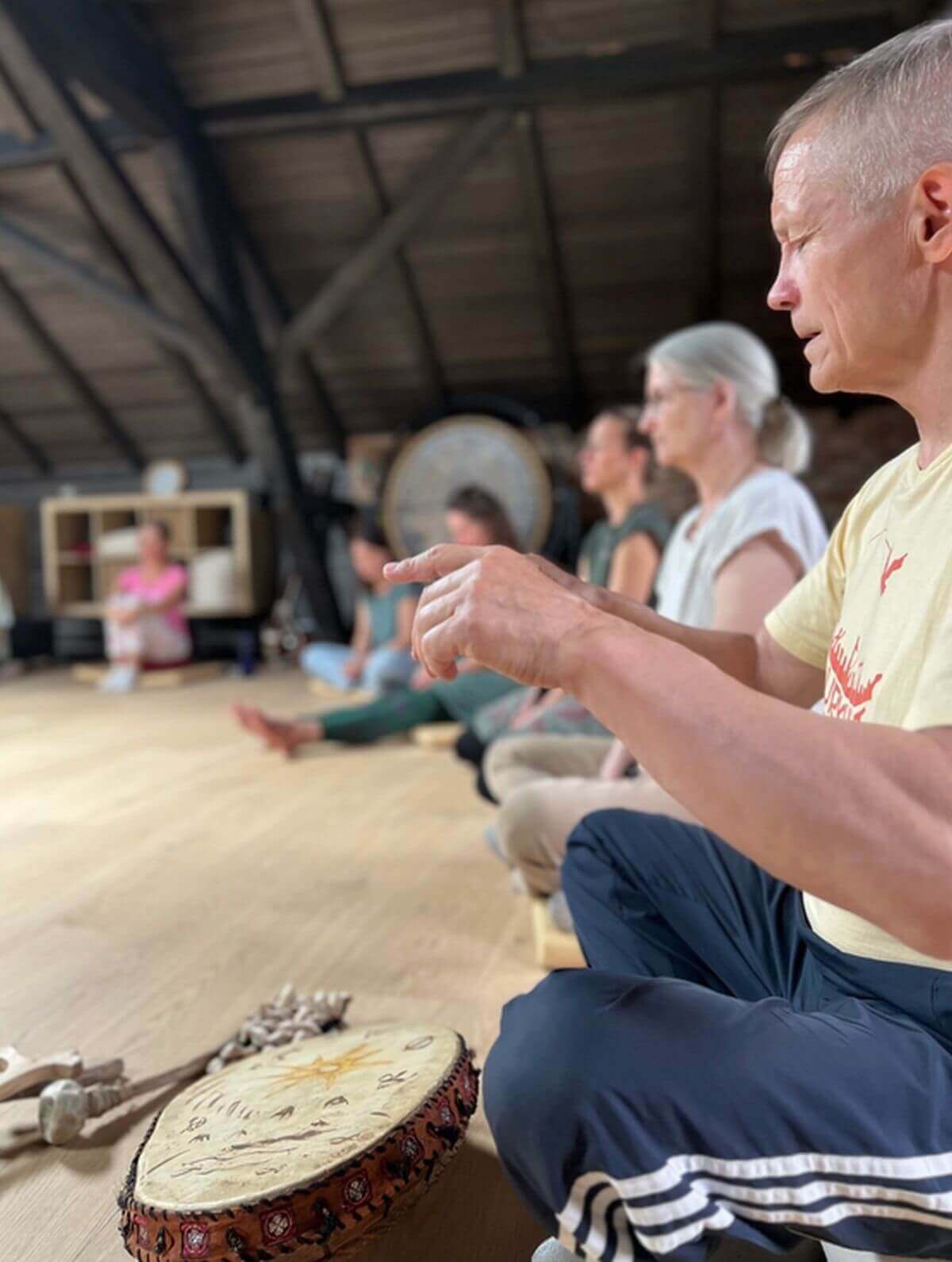
Finntastic:
And how do Sámi people feel about you giving yoik-courses to everyone?
Ailloš:
There are many ways of looking at it. I think there are no written rules for that. This is how I look at it: As a Sámi yoiker I have a responsibility to tell people what yoik really is. And that is what I want to explain to Sámi and non-Sámi people in my yoik classes. I think that sharing the best of our culture with others is how art should work. That way people can understand each other better. Furthermore, people in my yoik classes learn that yoik is not very easy to learn. It sounds easy, but when they listen and start doing it, people get more respect for yoik and the Sámi culture.
But some Sámi, for example, criticised me when I started teaching yoik to everyone. At first, I wondered why they were against it? Some Sámi are so happy when non-Sámi people say “Buorre beaivi”, which means „Good Day“, and show interest in learning our Sámi language. So I was really wondering, why they are not open to non-Sámi people who are interested in learning yoik?
But then I understand that some Sámi don’t like that, because in many parts of Sápmi our language has already disappeared. That’s one way to understand them. They don’t like it, because when you have lost your land, your way of living, your language and the only thing left of your culture is the yoik, you don’t want to lose that too.
And unfortunately, it often happens that non-Sámi people disguise themselves as Sámi in order to yoik for tourists and sell them souvenirs that have little to do with real Sámi culture. I agree with that, that this is some kind of cultural appropriation. Another answer why some Sámi are against it could be: If for example, I would teach a personal yoik to everybody else, without asking the person to whom it is dedicated for permission, which of course I would never do, then it’s wrong. Maybe some Sámi think the same about the traditional yoiks too.
But of course, I am open, for example, if you ask me to make a music project together. It is okay for me if you yoik together with me, because I know that you are really interested in Sámi culture and the yoik.
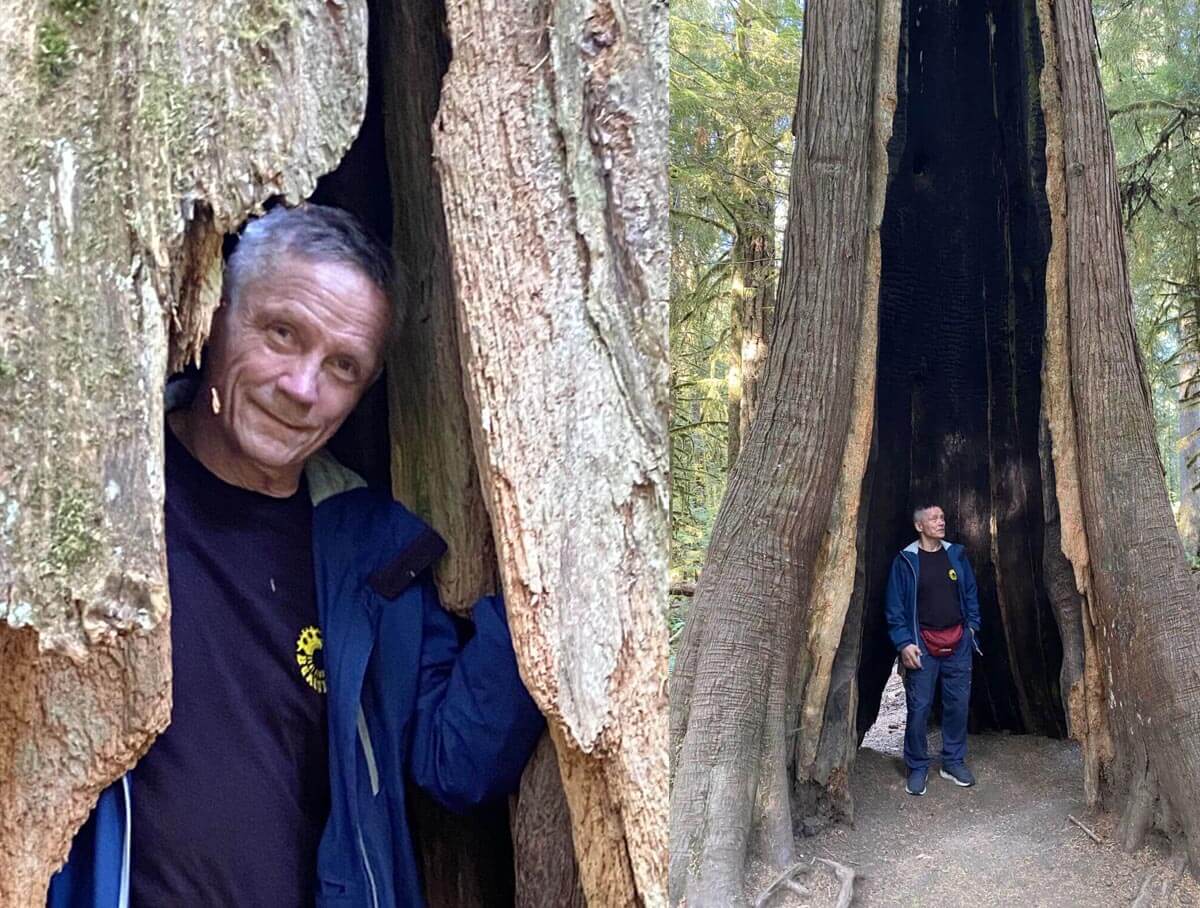
Finntastic:
Is there a particular yoik artist who has inspired you? And do you have a favourite traditional yoik?
Ailloš:
I like very much to listen to “Per Hætta”, he was born in Guovdageaidnu and moved to Kárásjohka**, and he is a very unique yoik artist. Or Inga Juuso, she had a really great voice, and she has composed yoiks too. She is one of my favourites. And also in my whole family there are great yoikers who still use the older and traditional yoik style. In our family we still yoik our ancestors five generations back. These yoiks were never recorded, but passed on orally through generations.
But concerning a favourite traditional yoik, I must admit I don’t have just one favorite yoik. There are just too many. I love to yoik my family, my sisters and brothers, my children, grandchildren and friends of mine. For example, I made a dovdna, a children’s yoik, for each of my nine grandchildren. And when they grow up, they get a new personal yoik, an adult yoik too. If you want to listen to one of these yoiks: I took part in this Sámi talent show and yoiked my eldest grandson, who is now 19 years old.
** (Northern Sami name for Karasjok)
Finntastic:
Now we want to know more about you as an artist. You are a founding member of the first Sámi rock band „Ivnniiguin”. Together with the well-known Sámi writer Ailo Gaup, you and your band wrote in 1981 the musical „Min duoddarat- Våre vidder“, which could be translated as “Our Highlands” and which was directed by Knut Walle and co-directed and choreogrpahed by Nils Gaup. How did the idea come up and what did you want to express with the play and the music?
Ailloš:
We started our band “Ivnniiguin”, which means “Within Colours” in northern Sámi language, in 1977. Even though American rock and country music was very popular at the time, I made sure that we only sang in Sámi. Then Ailo Gaup came to Guovdageaidnu to learn more about the culture of his ancestors. He is Sámi like me, but he grew up with foster parents in southern Norway.
Ailo Gaup had written about 35 poems about the plan to build a mine in Sápmi and make a road to it through the calving area of the reindeer. He asked my band and me if we could write music for his poems. Since Ailo Gaup didn’t write in Sámi, but in Norwegian, I suggested to him to translate his poems into Sámi language, so that we could also write all the music for the play in Sámi. Ailo Gaup liked that very much.
Later, Nils Gaup, whose father was the brother of Ailo Gaup’s father and who was already a trained and famous actor, made a proposal. He came to the gym where we were rehearsing the music for the play with Ailo. He listened and said he would like to make a musical out of it.
Of course, this was new to me, because I had never seen a play or a musical before. At first, our band wasn’t very enthusiastic, because we just wanted to play music. However, Nils Gaup rewrote some of Ailo Gaup’s poems into dialogues for the musical. Then I got the role of the main character Aslak. I would say that was my first experience with acting.
As the play progresses, Aslak’s character changes and he becomes an activist against the mine, because he has fallen in love with a girl named Solveig. I liked that very much. Nils Gaup also tempted me with the fact that some young people from school, who were very good dancers, would also take part in the musical. That convinced me. And when the scenes were created from the poems and the theatre piece grew and you could see this combination of dance and drama, my band members were also fully involved.
Finntastic:
The musical later led to the founding of the Sámi National Theatre Beaivváš, of which you have been a member ever since.
Ailloš:
Yes, that’s right. It wasn’t really planned, but the new Cultural House in Guovdageaidnu was just being built and was finished in 1981, just at the time when our play was ready to go on stage. So we were invited to open the Cultural House with our musical. We really didn’t expect it, but the hall was full six times. People came from many parts of Sápmi. They stood close together like sardines to see our play, because there were not enough seats.
After this success, we were finally invited to perform the play at the cultural festival in Harstad in 1981. That was great, because Sámi culture was the main theme of the festival at that time. There are still Sámi artists at the annual cultural festival, but Sámi culture has never again been the main theme of the festival. But nevertheless, our theatre piece led to the founding of the Sámi National Theatre Beaivváš. And I have been part of the permanent ensemble from the very beginning until now for about 43 years now.
Finntastic:
You are not only an actor at the Sámi National Theater, you have also played alongside Nils-Aslak Valkeapää in the film “Pathfinder” by Nils Gaup. What is the movie about and what significance does it have for Sámi culture?
Ailloš:
Pathfinder is the first feature film to be shot entirely in Northern Sámi language. It was also nominated for an Oscar in the category “Best Foreign Film” in 1988. The music was composed by Kjetil Bjerkestrand and Marius Müller, but Nils-Aslak Valkeapää wrote the background yoiks for the film.
The film is based on a Sámi legend that has been told in variations. There was a time when the Sámi were heavily taxed by all countries – Sweden, Norway, Finland and Russia. There was a lot of plundering, and many Sámi were killed. And the Sámi had to defend themselves with cunning or natural phenomena because they had no weapons.
That’s the common thread in Pathfinder. I played one of the men called Orbes, who fought against the Chudes, the bad guys. My character was hit by seven arrows during fighting. Incidentally, we hunt a bear in the film, and in that context there is a bear yoik, because it is an old traditional Sámi ritual to yoik the bear while hunting. And this special yoik was created by Nils Aslak-Valkeapää.

Finntastic:
Interesting, so you know the famous Sámi artist personally. Can you tell us a bit more about Nils-Aslak Valkeapää?
Ailloš:
Of course. I knew him very well, because we worked together for about two years. And I still remember him, even though he passed away many years ago. Nils-Aslak Valkeapää is one of the most famous Sámi artists in Sámi history. He was a yoiker, writer, actor and he also drew nice pictures. You could say he was a multi-talent. But he was also an important Sámi figure who fought for Sámi rights. In this case he was also a kind of protector of Sámi heritage and the yoik.
The first time I heard him with his band was at Guovdageaidnu Easter Festival in 1977. I was just in the audience listening to his music. Some years later Nils-Aslak Valkeapää invited me to participate in his music project. Together with him I released the CD „Sápmi lottážan“ in 1992.
Finntastic:
So what did this music-collaboration with Valkeapää mean to you? And do you have a favourite yoik from the album?
It feels good in every way. It’s an honour for me to have known him. When I worked with Nils-Aslak Valkeapää, I had the feeling that some of the energy of that multi-talented artist had passed into me. He motivated me. For example, at that time it was very easy for me not only to make music but also to draw like he did. But before, I was asked to paint a wall at school and I didn’t know how to start, because I thought I had to be as good as Leonardo da Vinci.
It was a big event in my life to meet him and all these professional jazz musicians and to improvise with them and my yoik. Because with my band we were just playing rock music with base drums and keyboards, you know. But with these musicians I felt very free to yoik the way I wanted to. With our music, we went together to Germany and the United States. It was a real highlight in my artist career.
For the album with Nils-Aslak Valkeapää we took sounds from nature, from the river, from the wind. But there are also sounds from the Alta demonstration that I made when I was there too. So on our CD you can hear all these sounds from the demonstration, for instance a helicopter, the whole drama. The title of the double CD is translated as “Sámi land my dear little bird”. So it is also a kind of ode to Sápmi, reflecting our history and culture.
I don’t think I have a favourite song or yoik from the album. It’s like a machine, every part has to be there you know. It’s the concept that counts.
Finntastic:
In 1999 you were awarded the Sámi Áillohaš music prize, which is named after Nils-Aslak Valkeapää. How does it feel to be a part of Sámi music history?
Ailloš:
It is of course an honour to receive such a prize, but what means the most to me is when I receive positive feedback about my music and plays from my immediate environment, for example from my Sámi friends, acquaintances and family. When I saw, for example, that they started to love the theatre, it was great. And of course, positive feedback from outside is also nice, but the feedback from my Sámi environment still means the most to me.
Finntastic:
For the play „Johan Turi“, which had its world premiere in Oslo in 2017, you not only played the leading role, but you also contributed a poem and you composed yoiks for the play. What is the play about? And what significance does Johan Turi have for Sámi culture and the yoik?
Ailloš:
Yes, that’s right. I am not a writer, but I wrote a poem called „Eallin lállá“, which could be translated as „Life rises“ and for which I immersed myself in the role and thus in the thoughts of Johan Turi. There is also a translation of my poem in the book of the same name, published in 2019. I also wrote yoiks, but they were not published.
It is said that Johan Turi was the first Sámi writer. He was also a well-known wolf hunter. The play is pure fiction, not a documentary. But it is based on the stories about Sápmi that Johan Turi wrote down. Later Harald Gaski and Gunnar Gjengset wrote the play „Johan Turi“ for the Sámi National Theatre, based on these stories. You can read more about the play on our website of the Sámi National Theater.
In his writings, Johan Turi describes our culture, hunting, reindeer herding, nature and medical rituals. There are also some important lyrics in one of his texts that describe the Sámi soul very well: “When a Sámi lives in a house, under a roof and surrounded by walls, his spirit is not awake. But if he can be out in nature, on the fjells, in the mountains, then his mind is free and with the yoik he can express what he wants to express.” It was really fantastic to play the role of Johan Turi. For me, it was like being transported to another world. We also performed our play outside Sápmi, for example at the “Museum für angewandte Kunst” in Frankfurt am Main.
Notice: Finntastic.de uses WP YouTube Lyte to embed YouTube videos GDPR compliant. If you click the "Play"-Button YouTube will collect information about you!
(VIDEO: Ailloš/Nordic Voices) In cooperation with the Nordic choir „Nordic Voices“ Ailloš brings two of his own yoiks on stage.
Finntastic:
For example, the Norwegian-Sámi band KEiiNO represented Norway at the Eurovision Song Contest in Oslo in 2019 with the song „Spirit in the Sky“. A modern song inspired by the northern lights, that mixes Sámi yoik with pop, rap, electronic music and dance. And the Sámi musician Frode Fjellheim composed the opening song for Disney’s film „Frozen“. What do you think of the fact that yoik has not only become a Sámi art form, but is also increasingly becoming a part of popular music? Is this a good thing, because it represents Sámi music and culture?
Ailloš:
As I always say: Art is free. The world is changing and so is music as an art form. That’s my personal point of view. We have been inspired by so many different styles of music and we use them, so why on earth can people not use the yoik for inspiration? I have used Rock’ N ’Roll in my yoiks and other Sámi musicians use Rap or even Opera or some Folk elements in their music. I think that all musicians should take yoik as an inspiration. But nevertheless, as I have already said, this doesn’t automatically makes you a yoiker.
I’m currently working on a new project with the a-cappella group „Nordic Voices“. Together with this choir, I am bringing two of my own yoiks to the stage as a choral piece. The challenge is always that when you’re trying something new, you have to be careful that certain modern harmonies don’t get the upper hand, so that the traditional yoik remains intact.
But I also understand that some Sámi are skeptical about it, because when you combine modern music with yoik, it can happen that the yoik is kind of watered down, so to speak. In other words, the special vocal characteristics of traditional yoik will diminish or even get lost.
Finntastic:
In 2022, you took part in the Sámi Grand Prix with your own yoik, which is dedicated to one of your grandchildren. What is the significance of the Sámi Grand Prix for the Sámi music scene and the yoik and what did it mean to you to take part in the competition, even if you didn’t win?
Ailloš:
The Sámi Grand Prix is becoming increasingly important for the Sámi music scene. More and more Sámi musicians and yoikers want to take part and present their yoiks, both modern and traditional. It has even happened that someone yoiked himself and didn’t find it strange.
Of course, it’s always nice to win a competition. But even if I didn’t win with my yoik, I would still say that I am a winner too, because I was able to participate and do this yoik for my grandson in front of such a big audience, showing him how much I love him. Also, as an artist, I love to be on stage and to give something to the audience and of course feeling all this energy that I got back from the audience was great too!
However, as with all talent shows, there was a big debate afterwards about whether the right yoik had won. But that’s normal, yoik is like music, it’s a matter of taste.
Finntastic:
The National Sámi Theatre’s latest play is called „Juoiggas!”. You have already had some guest performances in the USA, in Seattle and Minneapolis. What is the play about and why is it so important for your ensemble to perform your play also outside of Sápmi?
Ailloš:
“Juoiggas!” is the imperative of to yoik and means something like „Let’s yoik!“. We have integrated various yoik dialects into our performance and combined them also with aspects of Sámi history and culture. In other words, it’s a concert with several acting interludes, that tell about all aspects of Sámi culture, such as hunting rituals, reindeer herding and so on, but it also reflects historical and political aspects. For example, there is an anecdote about a researcher and a man who is supposed to yoik while the researcher is examining him. This, of course, has a tragic background. It alludes to the time when Sámi children were put into boarding schools and also were measured. I think the film “Sami blood” is a good choice if you want to learn more about this tragic chapter in Sámi history.
It was very interesting for our ensemble to tour in the United States with our new program, because there are a lot of Sámi descendants living in the Minneapolis area. And on the other hand, it is also important for Sámi artists like us to present Sámi culture as it really is. And not as it sometimes is portrayed and misused by tour operators. With our play “Juoiggas!” we see ourselves a bit like ambassadors for the yoik and the Sámi culture, also outside Sápmi. Which is great.
Finntastic:
What other well-known Sámi musicians and bands should we know about? And which young Sámi artists are currently enjoying great popularity?
Ailloš:
I would say: Listen to all Sámi artists. Because there are so many good things happening at the moment!
Finntastic:
What do you think? How will Sámi yoik and Sámi music develop in the future?
Ailloš:
The music in general and the yoik in particular have changed over time. And that’s the way it should be. It is of course exciting to trace the history of Sámi music and yoik as far back as possible, but it is also very interesting to see how the next generation of Sámi will carry on.
Finntastic:
Ollu giitu Aillos, for this inspiring interview about Sámi culture and yoik.
Ailloš:
It was a pleasure for me too. I hope to see you soon at one of my yoik courses. And if you come to Guovdageaidnu, do not hesitate and feel free to contact me.
About Iŋgor Ántte Áilu Gaup
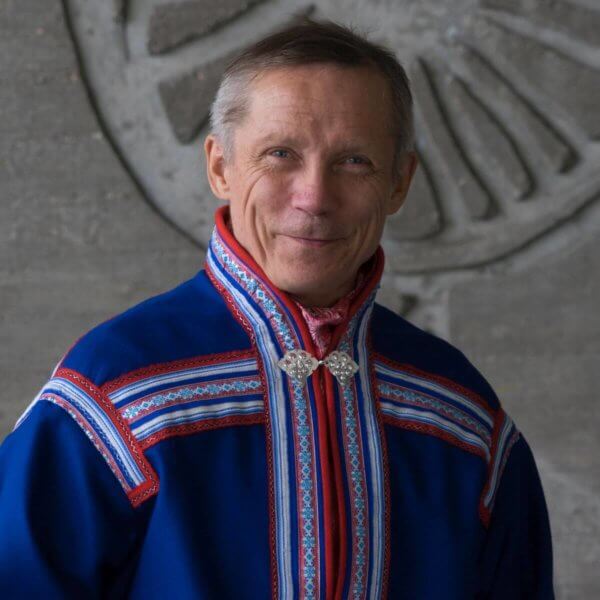
Iŋgor Ántte Áilu Gaup, also known as Ailloš, is a multi-talented Sámi artist (musician, author, composer, actor and translator) and yoik teacher from Guovdageaidnu*, born and raised in a Sámi reindeer-herding family on the tundra of northern Norway, about 170 miles north of the Arctic Circle. The Sámi are the indigenous people, living in parts of Norway, Sweden, Finland and the Russian Kola Peninsula, a geographical area known in their language as “Sápmi”. Before his family built their first house and settled down when Ailloš was seven years old, they lived all year round in a Goahti, which is a traditional cylindric Sámi tent. Nowadays, most reindeer herders no longer live like this, so Ailloš is part of the last generation to have had the privilege of growing up this way.
*(Northern Sámi name for Kautokeino)
Ailloš is a talented musician and a master of yoik, the ancient Sámi vocal tradition. As a teenager, Ailloš founded the first Sámi rock band named “Ivnniiguin” in the 1970s. The band created their own music, inspired by Sámi yoik, the Sámi language and Rock’ N ‘Roll music. Their latest album was called “Ánte”. Ailloš’s musical theater and acting career began in the early 1980s, when Ivnniiguin became involved in the formation of the Sámi National Theater Beaivváš and its first production “Our Highlands”, which is in northern Sámi language: Min Duoddarat/Våre Vidder) and was written by Ailo Gaup, directed by Knut Walle and co-directed and choreographed by Nils Gaup.
The Sámi National Theatre is a professional theatre in the Nordic region, whose productions are entirely in Sámi language. Ailloš has been a member of the permanent ensemble of the National Sámi Theater Beaivváš since its beginning, for which he regularly composes and creates plays. The theatre company also tours extensively in Sámi and international venues. Their latest play “Juoiggas!”, was also performed outside Sápmi in Seattle and Minneapolis.
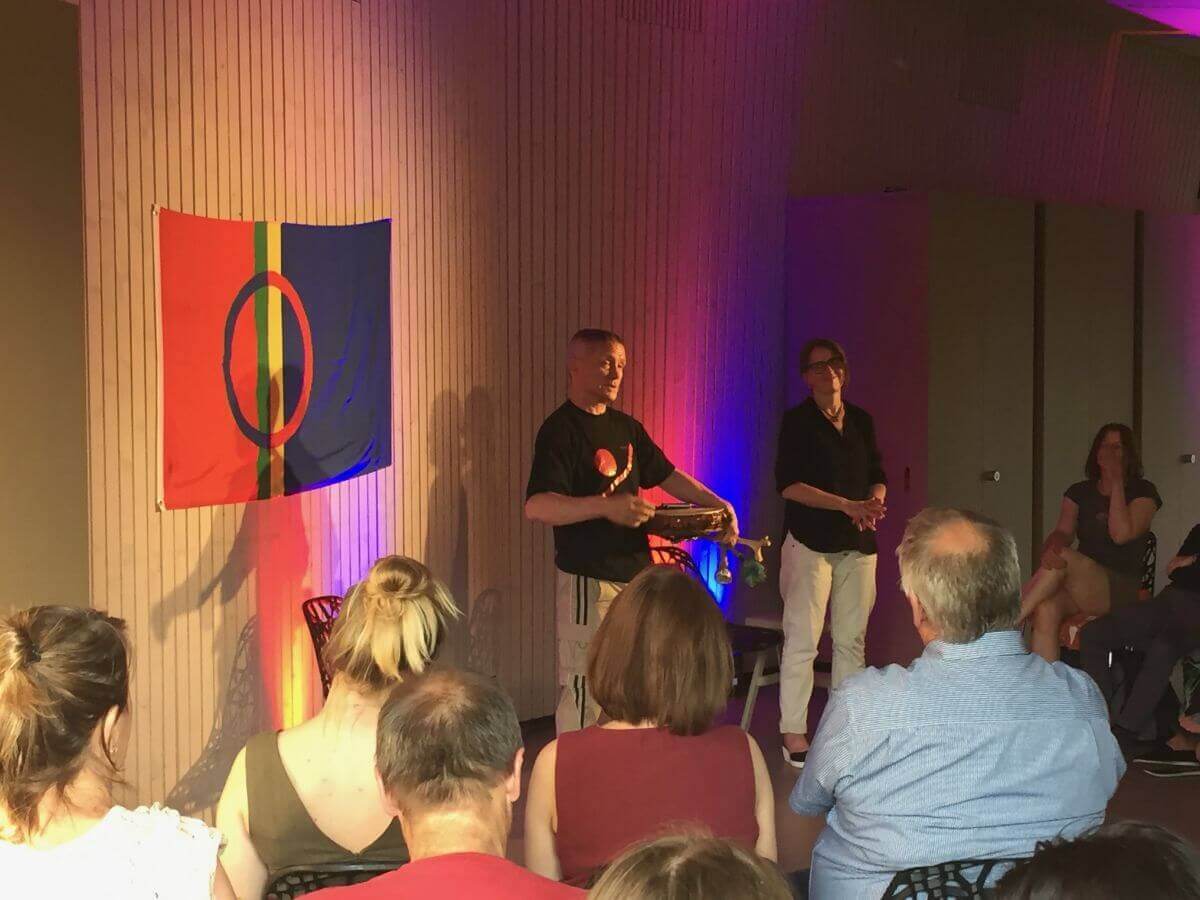
Ailloš has also starred in a number of TV-series and films, including “Pathfinder” (1978), which is based on an ancient Sámi legend. The film is the first feature full-length film shot entirely in the Northern Sámi language and was written and directed by Nils Gaup. Ailloš is also an inspiring solo artist and yoiker. He has written music for the radio and television, for several theatres, including the Sámi National Theatre and for Nordic and foreign radio and television companies such as the BBC.
He has received many awards for his music, including the Sámi Áillohaš Music Prize in 1999, a prestigious Sámi music award. His music is also very popular on Sámi playlists of the Norwegian Broadcasting Corporation (NRK). His album “Yoikur” is a collaboration with artists from different musical genres. His latest music project is a collaboration with the “Nordic Voices”, a Nordic choir from Norway that he met two years ago at the Klangwelt Toggenburg Festival in Switzerland. Ailloš has composed two yoiks with lyrics which Lasse Thoresen has arranged for this Nordic choir of six vocalists. Together they had concerts in Oslo Kammermusikk festival 2023 and Guovdageaidnu Easter Festival 2024.
As a yoik teacher, Ailloš offers yoik classes and workshops in Norway, Germany, Latvia and the US, but also in collaboration with “Joik in der Schweiz” in Switzerland. He also gives online yoik courses which will be announced regularly on his website. He yoiks with ease and joy and has devoted his life to cultivating and sharing the spirit of yoik within Sápmi, Europe and across the globe.
You will find more information about Ailloš on his website www.yoikur.com.
Notice: Finntastic.de uses WP YouTube Lyte to embed YouTube videos GDPR compliant. If you click the "Play"-Button YouTube will collect information about you!
(VIDEO: Joikas un Dainas) Ailloš giving yoik classes in Latvia in 2014.
Current yoik classes and concerts by Ailloš, and other Sámi events in Switzerland
- 20./21. July 2024: Yoik-classes with Ailloš in cooperation with the ritual- and World music shop Raven Spirit in Lenzburg and
Joik in der Schweiz - 28. July/1. August 2024: Uhuru Festival with Aillos
- 3./4. August 2024: yoik classes with Ailloš in cooperation with Klangwelt Toggenburg in Alt St. Johann and Joik in der Schweiz
- 17. August 2024: Yoik concert with Elin Teilus and Rickard Åströmat at Wirkstatt Auboden, in 9125 Brunnnadern, Switzerland
- 29. September 2024: Film «Beyond Tradition» and yoik concert with Marja Mortensson in Rorschach, Switzerland
- 19./20. October 2024.: Yoik classes with Berit Alette Mienna in cooperation with Joik in der Schweiz in Biel, Switzerland
- 15. November 2024: Concert with Mari Boine in Zürich, Switzerland
For more current dates of Sámi events and yoik concerts in Switzerland, see www.joik.ch.
Further information on yoik and sami culture
- Arctic University Museum of Norway
- Exploring the art of Sámi yoik with Ailloš and Elisabeth Berg
- Dictionary (English/German – Northern Sámi)
- homo peregrinus – Website about Sámi culture (in German)
- Ijahis idja Festival in Inari/Finland (Sámi and Indigenous music festival)
- Interview with Ailo Gaup (Gemeinschaftsradio Lora Zürich)
- Interview with Nils Aslak Valkeapää (2001)
- Joik: Sámi traditional music – Interview with Elin Teilus
- Joik in der Schweiz (Friends of the Sámi in Switzerland)
- Riddu Riđđu Festival (Sámi and Indigenous music festival in Norway)
- The Sámi – Wiki of the university of Vienna (in German)
- Sámi Museum in Inari (Finnish Lapland)
- The Sámi side of Tromsø, Norway
- Yoik ABC of Frode Fjellheim
- What is yoik? – Interview with Johan Ante Siri
- Wikipedia article about the Sámi
CD recommendations on yoik
- Nordic folk music collection, Trömsö Museum, Norway
- Lappish yoik Songs from northern Norway
- Sámi Folk music: Yoiks of the Finnmark (Original: Samisk Folkemusikk: Joiker fra Finnmark) with Berit Nordland, Mattis Mathisen Gaup und Per Hætta
- Áillohaččat – Sápmi, Vuoi Sápmi! (Sápmi Lottazan)
- Yoikur – CD from Iŋgor Ántte Áilu Gaup (Ailloš)
- Playlist by JoikePetter (Joik in der Schweiz)
Notice: Finntastic.de uses WP YouTube Lyte to embed YouTube videos GDPR compliant. If you click the "Play"-Button YouTube will collect information about you!
(VIDEO: Vesterheim Museum) Iŋgor Ántte Áilu Gaup and Elisabeth Berg from Joik in der Schweiz, giving insight into yoik, the traditional chant of the Sámi.
Some inspiring Sámi Artist:
- Ánde Somby
- Berit Alette Mienna
- Elin Teilus
- Frode Fjellheim
- Inga Juuso
- Mari Boine
- Nils-Aslak Valkeapää
- Ulla Pirttijärvi
- Per Hætta
- Wimme Saari
- Yana Mangi
Some Young Sámi artists
- Ella Marie Hætta Isaksen
- Hildá Länsman
- Jon Henrik Fjällgren
- Katarina Barruk
- Niilas Holmberg
- Sara Marielle Gaup Beaska (Adjágas, Arvvas)
- Sofia Jannok
Film tips on Sami culture and yoik
- Pathfinder (1987), film based on ancient Sámi legend, directed by Nils Gaup
- Sami blood (2016), movie about the oppression of the Sámi in Sweden, directed by Amanda Kernell
- Let the River flow (Original: Ellos Eatnu) (2021/2022), film about the oppression of the Sámi in Norway and the Sámi protests against the Alta Reservoir in northern Norway in the late 1970s, directed by Ole Giæver
- Näkkälä (2005), documentary film about a friendship between the Swiss Hans Ulrich Schwaar and a Sami reindeer herder named Iisakki-Matias Syväjärvi, directed by Peter Ramseier
- Interview with Peter Ramseier (in German)
- Beyond Tradition: Kraft der Naturstimmen (2023), documentary film about yodelling and yoik, directed by Lea Hagmann und Rahel von Gunten
- Power of Yoik (2018) – documentary film about Sámi yoik
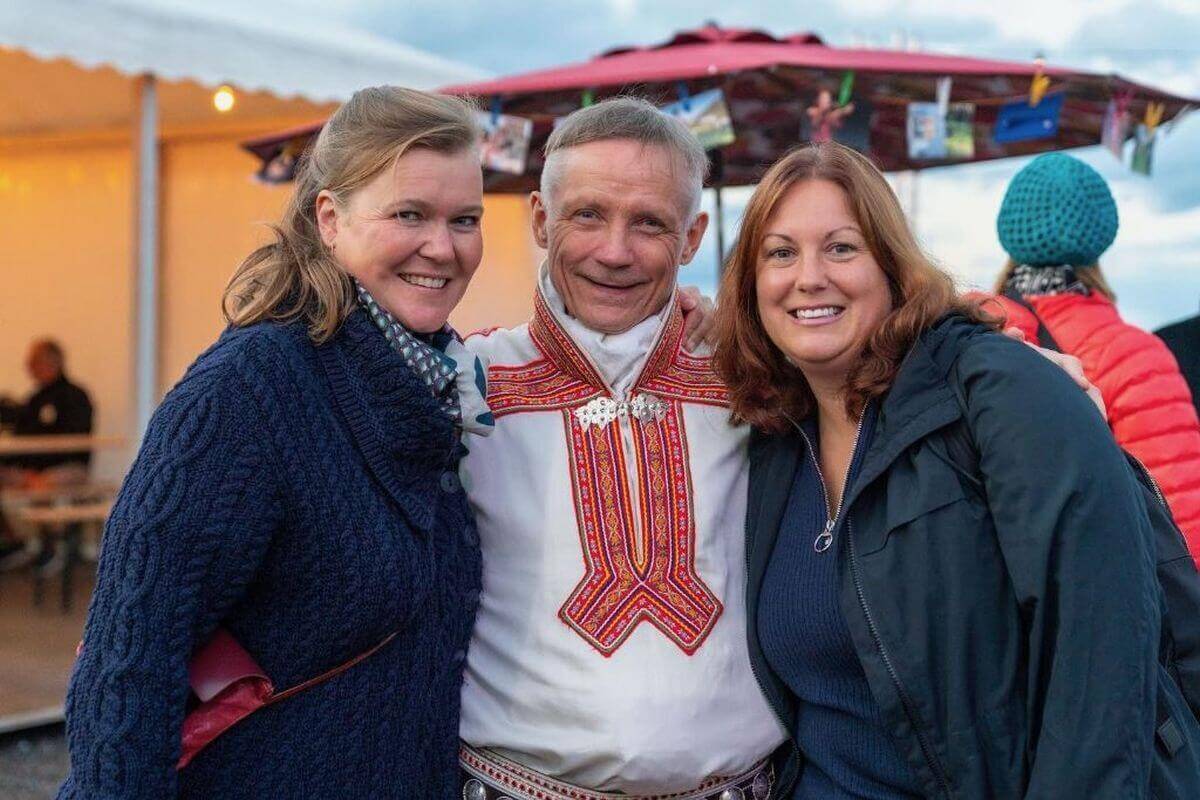
Literature tips on Sami culture and yoik
- Terveisiä Lapista (1971), Nils-Aslak Valkeapää (Finnish version)
(English version: Greetings from Lapland, 1983) - The Nights between the Days (2010), Ailo Gaup
- Das Herz des Nordens: Ein Sami Schamane erzählt (2016), Ailo Gaup (German version)
(—> More books of Ailo Gaup) - The Sámi People: Traditions in Transition (2010), Veli-Pekka Lehtola, Puntsi Verlag
- Liberation Sápmi – Indegenious Resistance in Europe’s far North (2020), Gabriel Kuhn
- Johan Turi: An Account of the Sami (German Version: Johan Turi: Erzählung vom Leben der Lappen, Die Andere Bibliothek)
- Books of Hans Ulrich Schwaar written in German (z.B. „Briefe aus der Tiefe“, 2017) (–> Website of the Hans Ulrich Schwaar foundation)
- Klingende Wildnis – Erlebnisse in Lappland, Erich Wustmann, 1956, Erich Röth Verlag (book in German)
- Der Fremde am Tana. Eine Geschichte aus Lappland, René Gardi, Sauerländer, Aarau 1945 (book in German)
- Verzauberte Wälder. Legenden aus Lappland, Robert Crottet, 1968 (book in German)
More articles about Sámi culture and yoik on Finntastic.de
- Sápmi und die Samen – Das Land und das Volk (article in German)
- Joik in der Schweiz – Ein Herz für den samischen Joik (article in German)
- Näkkälä – Ein Film über die samische Kultur und eine ganz besondere Freundschaft (article in German)
- RENRAJD vualka – Samikultur in Nordhessen erleben (article in German)
- Rentier-Einmaleins im Tierpark Sababurg (article in German)
- Unterwegs durch Sápmi mit Hans-Joachim Gruda (article in German)
